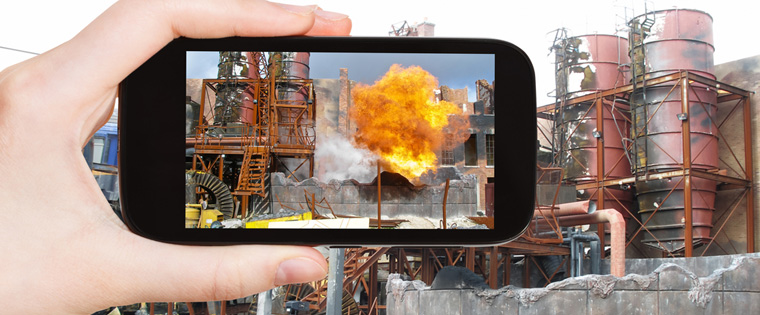From Enforcement to Engagement – Microlearning for Safety Training
This blog post shares how microlearning can be used in different phases of the safety training learning cycle.

The number of workplace injuries and deaths is increasing year by year. According to the 2014 Census of Fatal Occupational Injuries (CFOI) by the Occupational Safety and Health Administration of the United States Department of Labor, 4,821 workers were killed on the job in the year 2014. So, on an average, more than 92 deaths a week or more than 13 every day. Employees are their greatest asset, and organizations cannot afford to lose them; they need to take steps to ensure their safety. Also, regulatory bodies make it mandatory for organizations to implement safety training programs and prevent such fatalities.
Organizations generally conduct safety trainings as one-off annual events and don’t plan for training sessions on-site. They provide safety manuals, but employees often do not read them before starting their tasks as the manuals are too lengthy, mundane, and employees are hard pressed for time. For such employees, delivering content in digestible and very specific nuggets on their mobile devices will help. This method of delivering training content is called Microlearning.
Usually, learning happens in three phases – readiness, discovery, and reinforcement. The readiness phase is where you have the desire to learn, the discovery phase is where you learn the skill, and the reinforcement phase is where you practice the skill.
Let us see how microlearning can be used effectively in different parts of the learning cycle.
The Readiness Phase
In the readiness phase, that is before the actual training program, share microlearning bites consisting of motivational, real-life stories of how people were prone to fatalities when they ignored safety guidelines. Such stories tell employees how important the training program is. But, these stories need not always have to be with horrible consequences; share stories of how people saved themselves from getting hurt by following the safety norms. Such stories create awareness and interest about the training program.
Your microlearning nuggets can be in the form of short animated videos or infographics in a series of thumbnails.
The Discovery Phase
In the discovery phase, that is the during actual training program, deliver short online training courses, not more than 10 minutes long on the safety guidelines. Do not dump all the guidelines into one course and overwhelm learners. Instead, divide them into different modules so that they are easy to learn and retain. For example, have a short module on the PPE (Personal Protective Equipment) to be used in a particular hazardous area, and another module on how to use them.
These microlearning modules can be delivered in the form of short e-learning courses (micro-modules) or how-to-videos.
The Reinforcement Phase
In the last, reinforcement phase, that is after the training program, support learners with job-aids to recollect the information. This is important because a learner forgets almost 70% of the learning within 24 hours. But as the safety of employees is of utmost importance to the organization, they cannot afford such quick dissipation of knowledge. So, job-aids in the form of infographics, flow-charts, interactive eBooks, and other digital resources must be provided to improve information retention.
This is how you can use microlearning in the different phases of the safety training learning cycle. But, apart from having microlearning in the right places, developing these modules is another challenge. So to know the best practices of developing microlearning modules, here is a blog – Tame Your Training With 4 Best Practices Of Microlearning.




